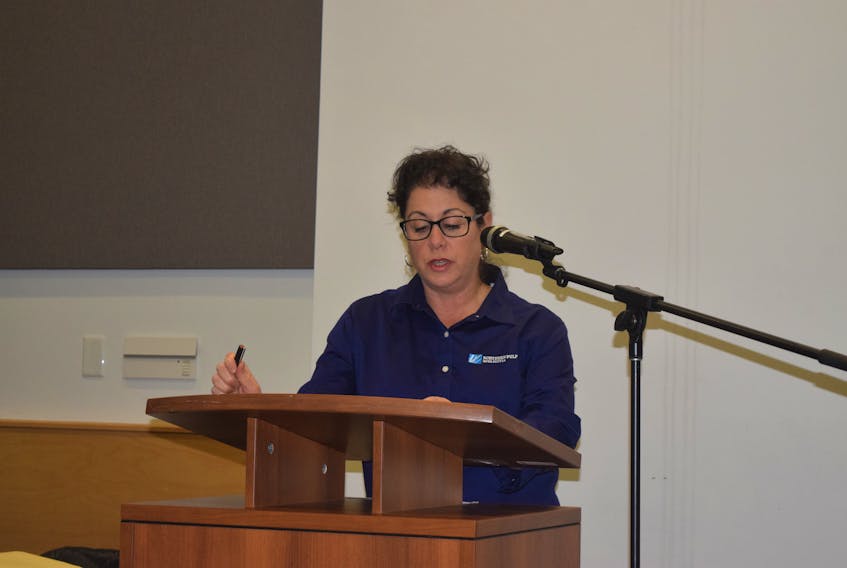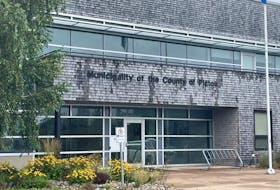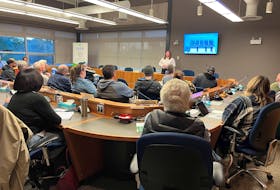WESTVILLE ROAD - Northern Pulp and Dillon Consulting Limited held an open house at the Pictou County Wellness Centre Monday, outlining future plans for a replacement effluent-treatment facility.
Representatives explained the technical details of the proposed process for treatment at Northern Pulp after the current Boat Harbour site is shut down. The treatment facility would be built beside the mill, with a pipeline to carry treated effluent to an outfall site in the Northumberland Strait.
Terri Fraser, the technical manager and project lead for the replacement facility, said that flow dynamics restricted potential outfall areas to the Northumberland Strait, but stressed the importance of choosing an area that would have the least environmental impact.
Pictou Harbour was dismissed as an outfall area, Fraser explained, because of the slow currents and environmental conditions in that body of water that would slow the breakdown of the treated effluent, and harm aquatic species.
Fraser said the new facility’s treatment process will improve effluent quality, reducing the amount of bleaching required to treat the pulp produced at the mill by 30 to 40 per cent.
Fraser explained that it will be a standalone system that uses oxygen to remove lignin, using oxygen and pressure, and boiling it in a recovery boiler, instead of it being dissolved and put into the effluent – something key to the process.
Another feature of this new process will be the use of less water – something that will be achieved by using new equipment at the mill, including cooling towers to reduce high summer water flows.
The new cooling towers will be rated for 85,000 cubic metres of effluent per day, which is peak effluent flow – and greater than the 70,000 cubic metres per day that are treated currently.
The treated effluent will be carried by a 36-inch diameter polyethylene pipeline laid at the bottom of Pictou Harbour, to a diffuser in the Northumberland Strait – this will be something that involves a number of environmental impact studies.
Showing a series of predictions of effluent concentrations in the Northumberland Strait as a result of the new proposed treatment process, Fraser said “a lot of these parameters meet background concentrations in the water in the near vicinity of the outfall. That was something we were pleased to see.”
Fraser provided a brief history of the processes that have taken place at the mill – from its origins in 1965, when the provincial government gave raw water to treat effluent – and demonstrated that over the years, the quality of the effluent released from the mill has improved.

There will be a series of consultations and environmental assessments taking place throughout the entire process, right up until summer 2018. That will be followed by a 30-day public review, once the environmental assessments are complete – and eventually, the minister’s decision on the matter.
Guy Martin, an engineer and principal consultant with KSH Solutions, explained why a closed-loop system, like the one used in Meadow Lake, Sask., is not physically possible in the case of the Northern Pulp with the technology and pulping process—the bleached Kraft pulp process – in place at the mill. He noted that the effluent must be treated, in order to protect the receiving water and wildlife, involving the removal of solids (primary treatment), and the removal of biodegradable “non-settlable organic pollutants, using microorganisms.”









